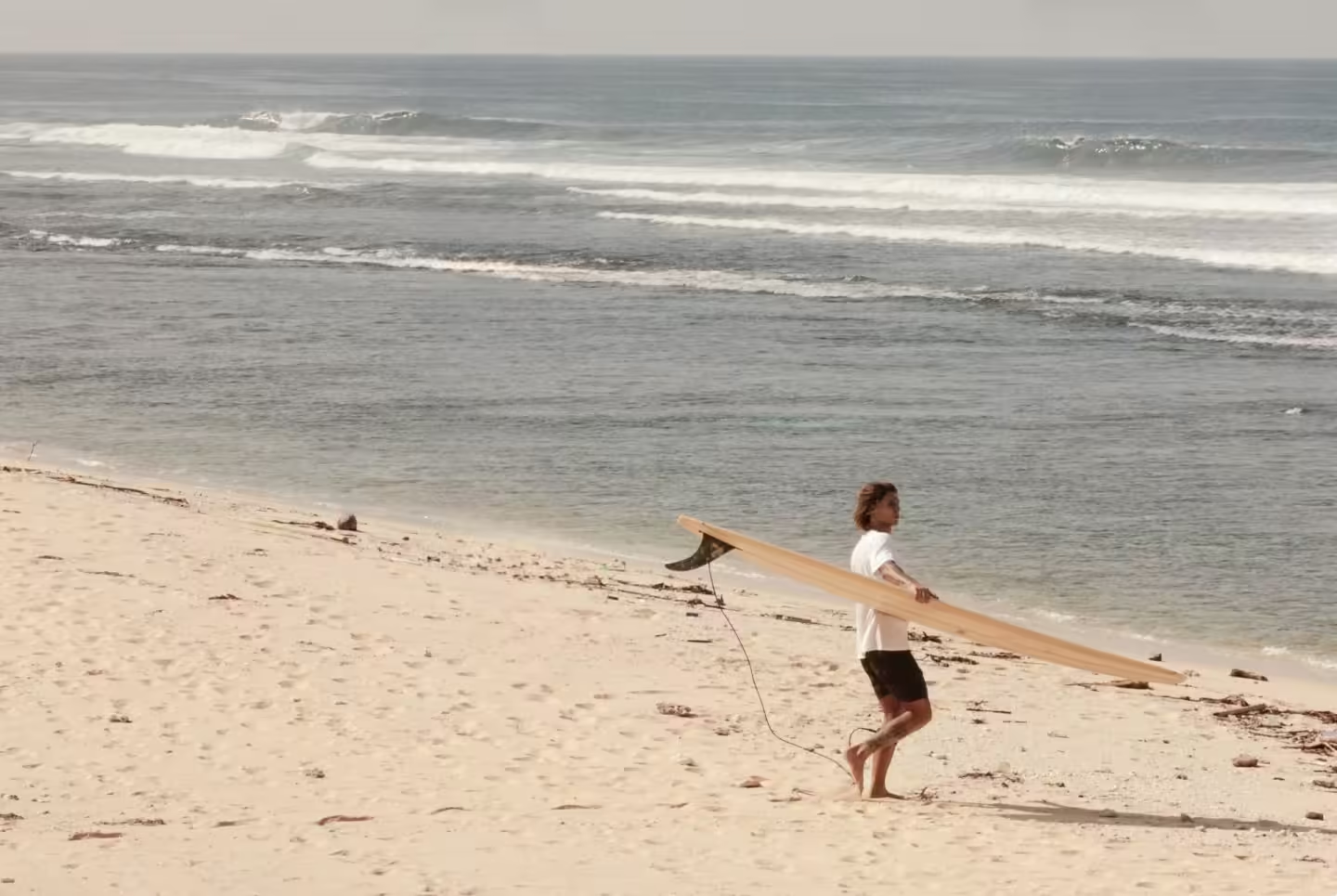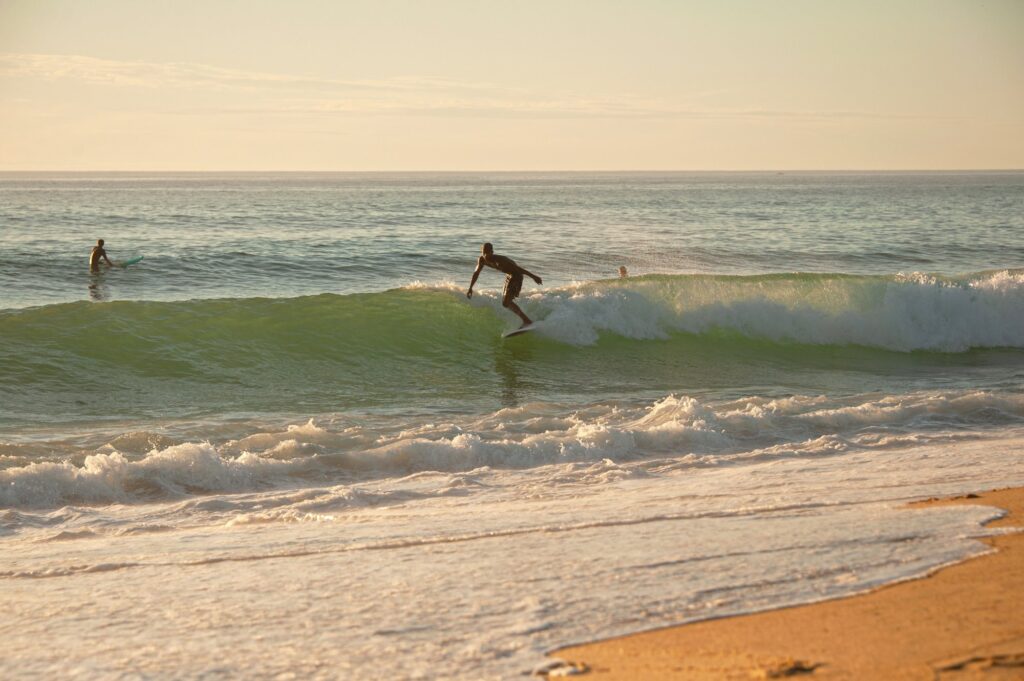How Do The Different Types Of Surf Breaks Form?
When you’re out at the beach, do you ever wonder where the waves come from? Depending on where they break and what type of seabed is beneath them, waves can offer a variety of different experiences for surfers.
With a little bit of knowledge and understanding, it’s easy to see how different beach breaks like sand breaks and reef breaks contribute to the wave-making process.
Let’s take a look at how these magical beach breaks work, and how it affects our surfing.
The Science Behind Surf Breaks
Surf breaks are created when energy from the ocean’s surface creates a wave that is met with resistance before it reaches the shore.
This resistance can be caused by coastal features like jetties and reefs, or sandbars generated by tidal movements.
As the wave propagates towards the shore, its height increases due to shallow water, which in turn causes the wave to break.
The location of the breaking point is determined by the shape of the seabed and can result in different kinds of breaks.
The formation of beach breaks is an essential part of surfing, as these waves offer plenty of opportunities for surfers to ride.
Different types of beach breaks require different types of surfing styles, so it’s important to be aware of the kind of break you are riding. Let’s get to know them.
What Are Sand Breaks?
The process of sand building begins when waves break close to shore. As they break, water is pushed onto the shore in an outward direction.
This causes the sand particles to move along with the wave toward the beach. The particles are then deposited on the shore, creating a gradual slope that will eventually become a beach break.
The shape of these breaks varies depending on the size and alignment of the sandbars, providing different kinds of waves for surfers.
Existing sandbars can also change shape over time due to tides and storms. Tides tend to carry away loose material from the bars while storms can cause strong currents that rearrange them entirely.
This means that no two days at a beach break will be exactly the same. This entire process is known as longshore drift and it occurs because of wave energy.
As waves travel along a coastline, they push sediment particles toward shallow areas where they deposit them as sand banks or bars.
This is why many beaches have such recognizable curves in their shapes – it’s all thanks to longshore drift.
Sand breaks can be found all over the world and tend to have long, gentle waves that are ideal for groms who are just learning how to surf.
Plus, since sand absorbs energy from incoming swells, you’ll never have to worry about getting clobbered by a rogue wave while learning how to ride one
Some of the most famous examples include Huntington Beach in California, Bondi Beach in Australia, and Waikiki in Hawaii.
These breaks are popular with both beginners and experienced surfers alike and offer a wide range of conditions and waves to suit all levels of skill and experience.
However, these spots can also get quite crowded since they tend to be popular with both groms and more experienced surfers alike.
What Are Reef Breaks?
Reef breaks are unique because they form when there’s a reef or other rocky formation beneath the surface of the water.
This type of beach break tends to produce much larger waves than sand breaks since it’s harder for the wave energy to dissipate as it travels over rocks compared to sand.
Reef breaks also tend to be less crowded since they’re usually located near dense coral reefs where swimming is not recommended due to strong currents and dangerous wildlife like sharks.
Reef breaks are a great option for experienced surfers who want to ride larger and more powerful waves.
The intense wave energy created by the reef can create hollow barrels and other features that make for a thrilling ride.
In addition to being more dangerous, reef breaks are also difficult to read and predict since the waves can be unpredictable due to the constant shifting of sandbanks, currents, and other coastal features.
If you’re looking for reef breaks around you, you better know that they can be found all over the world, from tropical locations like Hawaii and the Maldives to more temperate regions like California and Australia.
Some of the most famous reef breaks include Pipeline in Hawaii, Teahupoo in Tahiti, and Margaret River in Western Australia.
These breaks are known for producing massive and powerful waves that can reach heights of 20 feet or more, making them a favorite among experienced surfers and big wave riders.
What Are Point Breaks?
Finally, we have point break waves — the holy grail for experienced surfers everywhere. Point breaks form when an offshore wind pushes against a protruding point or headland and creates powerful swells that travel parallel to the shoreline before breaking.
These waves can be incredibly fast-moving and challenging even for experienced surfers due to their speed and strength.
Since points trap energy from incoming swells between two land masses, point break waves tend to be long-lasting, incredibly powerful, and are typically more reliable than other types of beach breaks because they form consistently under certain weather conditions.
Of course, they also require tons of skill and experience; if you’re new to surfing or still learning your way around the water then it’s best to stick with something a bit tamer until you’ve built up your confidence.
Point breaks are ideal for surfers who are looking to challenge themselves and build confidence in their surfing ability. These waves can provide a thrilling ride, and offer a variety of ways in which to ride them.
With the right knowledge, preparation, and practice they can be a great source of joy and accomplishment for any surfer.
Some of the most famous point breaks include J-Bay in South Africa, Mavericks in California, and Bells Beach in Australia.
These breaks are known for producing long, powerful, and fast-moving waves that can be incredibly challenging and require a high level of skill and experience to ride.
Conclusion
We learned that surf breaks come in different forms, each with its own set of characteristics and challenges.
From gentle waves of sand breaks to the powerful and challenging waves of reef and point breaks, there is something for surfers of all levels and abilities.
One thing is certain — no matter what your skill level is, there’s sure to be a beach break that fits your needs.
It’s actually more advisable you choose beforehand your surf break in regards to your surf level. So grab your board and get ready — it’s time for some knowledgeable surfing time.



